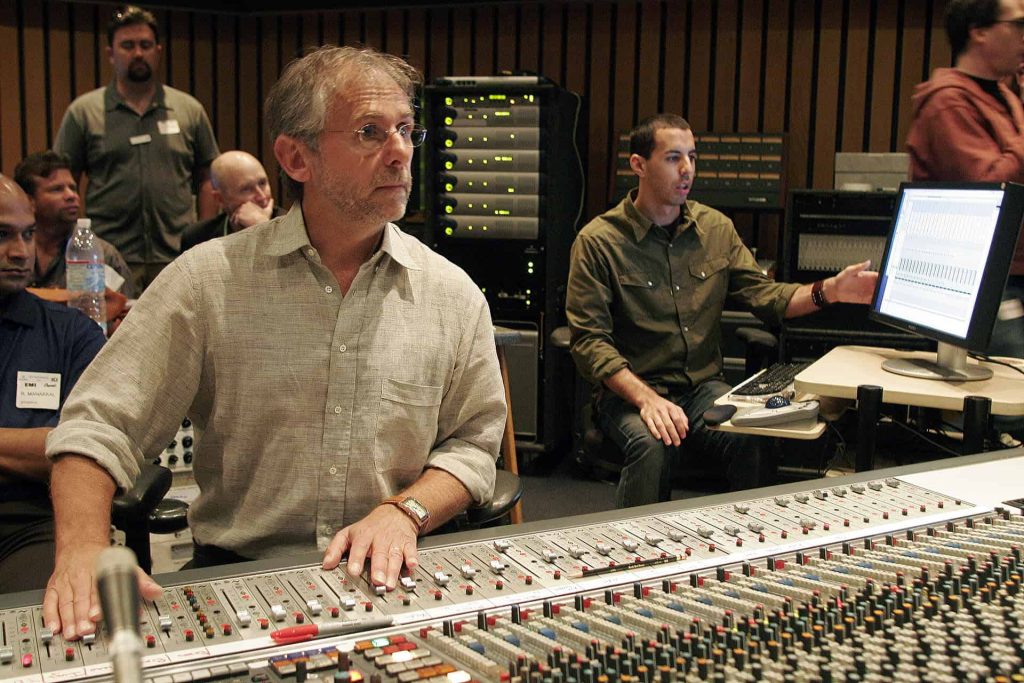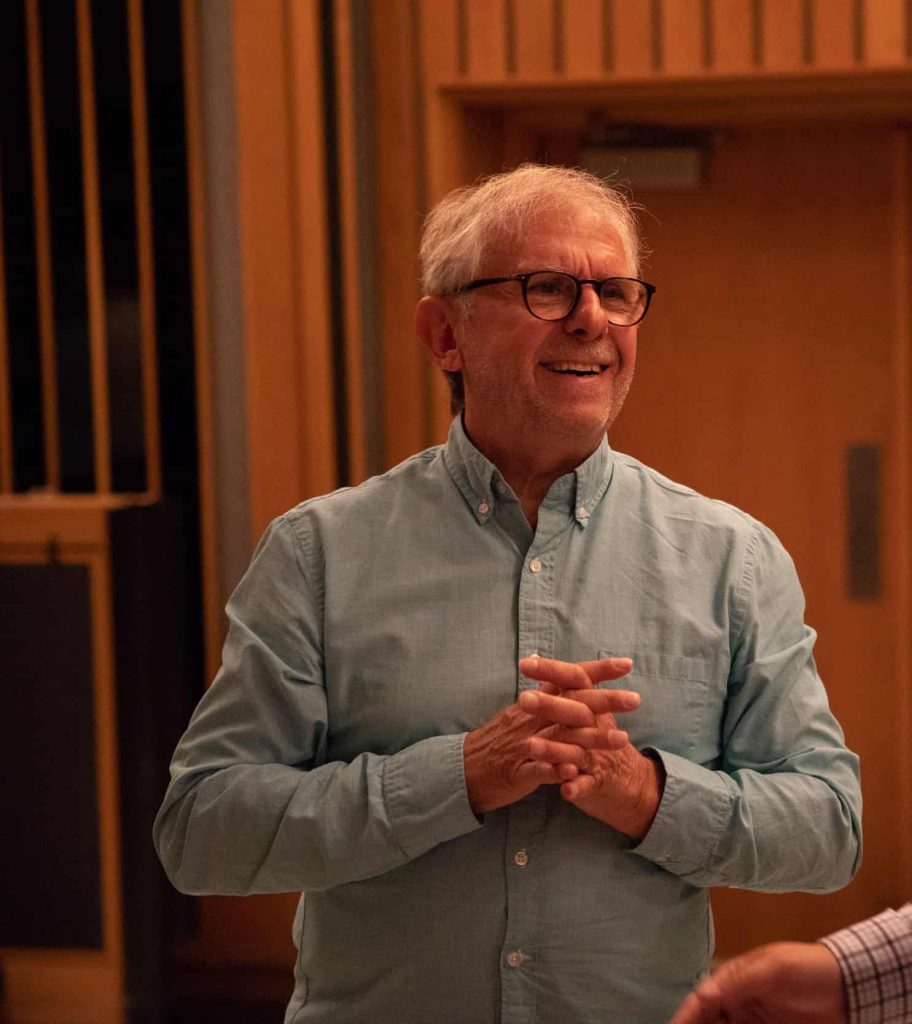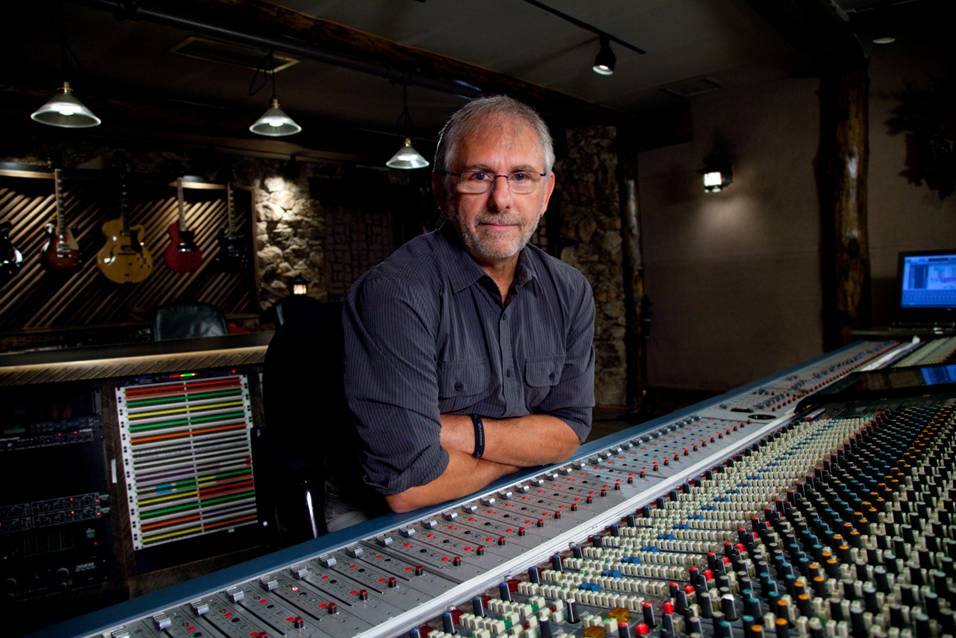After speaking with Elliot Scheiner for almost an hour, one thing was clear: he loves rock music, especially in surround sound. His passion for music drives his work, which has earned him world-class recognition including 2 Emmys, 8 Grammy wins and 27 Grammy nominations. It also inspired him to create the first 5.1 system for cars with Panasonic and Acura. But, as passionate as he is about 5.1, he has some reservations about Atmos technology for music.
How did you first get into immersive audio?
It started with the Eagles. Hell Freezes Over was their first album after they'd been on hiatus for 17 years. It was an MTV special. We did it in stereo, and it was a huge success. I got asked to do a 5.1 mix of the album, and I didn't know enough about it. I knew about quad way back, but this was something brand new to me.
I got a demo on basically what happens when you mix in 5.1. So I ended up mixing, Hell Freezes Over in 5.1 in about ‘96 or ‘97. And that was my first time involved with 5.1.
A lot of musicians learn about 5.1 initially from movies, and then transition to making it for albums. Was that the case for you too?
You know, 99% of the immersive stuff was for albums. I think I did one film in 5.1. So, it was fairly big.
I was hired by Warner Brothers around ‘98 to be a liaison between the company and the artist to explain 5.1 to the artists - what it is, and why you would want to do it. In those days, you had to get approval from the artist. Now the way they're doing it, you don't need approval. They're just going ahead and doing it. They’re not considering what the artist wants.
So, most of it was albums. I did Hotel California and Hell Freezes Over for the Eagles; 461 Ocean Boulevard for Eric Clapton; Derek and the Dominos Layla and other Assorted Love Songs; A Night At The Opera for Queen; Gaucho for Steely Dan; R.E.M.’s Automatic For the People; Guns N’ Roses’ Appetite for Destruction; Foo Fighters’ In Your Honor and more. There are so many that I have done.
And you know, that was what I set out to do. In ‘96, it was just something different than stereo. God, I wanted to do this so badly. And I pretty much stayed in that for years and years.

Do you have a favorite project of the ones that you've done?
Yeah, I am pretty fond of the Eagles. And Steely Dan.
I'm a personal fan of In Absentia . That’s one beloved by a lot of surround sound fans as well. Do you have any anecdotes to share or a favorite memory from that production?
I have a surround room in my house. And I don't use Pro Tools. I use Nuendo.
Stephen wanted to come here. He didn't know anything about surround sound. He knew that he wanted to do it, and he’d heard it, but he tends to mix by himself and record by himself.
He came to my place loaded down with Pro Tools gear. And we had to somehow get this gear . This was in the early days, when you had to use their converters and all their gear. So we had to wire it up so that we could bypass Nuendo and get into my console.
It's funny because I think that was a major learning influence for Steven. We had a great time doing it. The music was so incredible. The fact that he had basically done I think about 80% of the music in Spectrum - it was pretty wild.
Would you ever create an album in Atmos or Auro 3D?
I thought I would. But, you have to understand this bone of contention: they're hooked up with Universal. Basically, Dolby is trying to get their chip everywhere.
Atmos is phenomenal in movies. Universal’s hiring a lot of engineers with no immersive experience. have no major impact on what they've done either in stereo or 5.1 or Atmos or anything. And it's almost like they haven't listened to what 5.1 started off as.
In my opinion, in 5.1, you had an album (let's say Hotel California), and you found a place for the band. The drums were usually in the first three up on top: left, center, right. Bass might have been all around. One of the guitars might have been in the right rear. Another guitar might have been in left front or right front. But you basically establish: this is the band. You have a sense of where everything was coming from.
What I've heard on the Atmos mixes is everything gets panned. There's no sense of a band anywhere. It's just panning from front to back and back to front and across. And it's very confusing.
There's no way that anybody would consider 11 speakers so that leaves the listener with a Sennheiser or Sonos soundbar or Echo smart speaker. You listen to 5.1, and you're sitting in front, but you have an idea of what’s behind you. You say, “Well, I've never heard that guitar before in the rear.” You get a sense of what's going on, you get a sense of where the band is!
I have a car system in all the Acuras, and it's all 5.1. Panasonic makes my system. They told me Dolby came to them. It's all about how they want their chip in the car. You know, the ideal place to listen to music is in the car.
Dolby Atmos is great in a theater. You get a perfect picture of what Atmos is.They can’t convince me, just yet, that it’s great for music.
Yeah, it's not accessible to most people yet in a way they can actually enjoy.
You're right.
Speaking of the surround sound system for Acura, how did that come about? Did you want to do something that worked really well with the kind of music you create? Did Acura approach you?
Neither. The origin was, “How do people hear this?” And when you go back to all the formats of music that came up through the years: when they had an eight track cartridge, you put that into a car system. And then you went through CDs. The only way CDs became popular was in the car. Cassettes were the same thing. Cassettes became popular because they were in the car.
So I thought, Well, why don't we put 5.1 in the car? And that was my idea. I just wanted people to hear this music. When we put the system in, it was 2004. I had letters constantly from Acura buyers who would listen to 5.1 wherever they had to go. When they got home, they pulled into the garage, and they would listen for another half hour.
It was exactly what I wanted. They were so intrigued by what this sounded like. It wasn't stereo anymore; it was discreet surround sound. I really wanted this to be heard.
When we mixed stereo, we would always find a car to hear what it sounds like - was it good or bad? I wanted to do this with surround, but I wanted it to be good.
When we did the last Eagles’ Hell Freezes Over, we went into the car to listen to our mixes. They were totally into the way the Acura sounded in terms of stereo.
When I was working with the Foo Fighters, I was over at Capitol in LA mixing their surround record. And they were actually in the Valley doing some stuff on another record. I finished the mix, and I said, “Do you guys want to come down here, or do you want me to send it up to you?” And Dave said, “We've got no way of listening.” And it was understandable. Most studios weren't set up for 5.1. And I said, “Well, let me make a phone call or two.” I called Acura and I said “Look, is there any way you can get a TL up to Dave Grohl’s place so he can have surround?” And they did. They put a TL up there. I sent them the mix, and they listened in the car. The first call back was, “Sounds great, don't change anything.” They listened to the entire record in 5.1 in the car. So, it became not only a system for people who wanted to hear this kind of music, but for producers and artists to actually approve things. That's what I wanted. I wanted to take on the 5.1 market in cars and really do it big.
Do you have any advice you would give someone who's looking to go into 5.1 for the first time?
What I do normally, if I get a call for stereo, I’ll mix the entire album in stereo and then tell the artist, “You know, I can do a 5.1 on this if you want it.”
I did one about six months ago. And I said, “You know, we can do the 5.1 here. And instead of releasing it, you can make it in FLAC. Do it in stereo, do it in 5.1, do it in FLAC - just make a thumb drive, and have everything.” So, we ended up doing that.
The funny thing is, he said to me, “I started selling this stuff, and the people that are buying it just want to hear what you've done.” That was great for me. I didn't think that had a name out there that would indicate that they would buy surround just to hear this.
I can't say anything about anything above 5.1. I know Alicia Keys is doing her new album in Atmos. And one of my friends, George Massenburg, is doing that. George set it up like it's a band coming from a specific place. Like you know where the listener is.
It's perfect for films, but I haven't heard anything musically that you'd go, “This is the key. This is great.” It's just okay. I’m not blown away. I'm blown away by 5.1. But you know, I'm not really blown away by Atmos yet.
I did Eric Clapton, Layla and Other Assorted Love Songs. I was accused of changing it so much that it didn’t sound like what people had listened to. You spend your life listening to Derek and the Dominos in stereo. And now, here it was in surround, and it was a totally different atmosphere. I understood what people said, but either way came out great.
But now with Atmos with that amount of speakers? I can't really follow now. It's good for the speaker manufacturers, sure. And it's good for Dolby.

Do you have a favorite genre? Does that make a difference when you're mixing music?
It does. With the Eagles when I did Hell Freezes Over, they said, “What's your concept?” And I said, “Well, I'd like to believe that somebody who's listening or maybe watching as it develops in surround sound, I want them to feel like they're actually on stage and listening to all the guys placed all around them.”
The Eagles were up front, but there were other players, you know, and I had most of the side men in the rear speakers coming forward. You just get lost something like that. At one point it was considered rock. Not anymore.
When you do a jazz record, there's less people most times. So if you have piano, guitar, bass drums, and maybe your singer, that could be it. It's difficult to make it interesting to people.
I did Toto IV in surround. And you hear things coming out of everywhere. Everybody's into hearing things they've never heard before. You go from stereo to 5.1, and you have a couple more speakers. And they're totally into it. They’ll say, “Wow, I never heard this.”
When I did the original version of “Hotel California,” I knew it in stereo. And when I actually got it in surround, even Glenn said to me, “Wow, I don't even remember playing these guitars.”
There were two acoustic guitars that were just fillers. I put them in the rear speakers and they were just supplying a concept against the drums and bass. And you know, the guys didn't remember a lot of this stuff.
Do you have any new big plans coming up? What’s next for you?
Well, I still get many phone calls for 5.1. Before the pandemic started, I was supposed to do a 5.1 of James Taylor and Carole King. That got put aside because of the pandemic. For a lot of people, you know, their whole lives are passing by because of this thing. But, no, I’m staying with what I do. I love it. I can't imagine not working or doing anything else.
As far as plans go, I work on the cars. I do music. I produce, I engineer. And now I have a baseball team.
A baseball team! Is that in Connecticut?
Yeah, that's great fun. Yes, in Bristol, Connecticut and they're called the Bristol Blues. The original idea was to integrate baseball and my love for music when naming the team. We have a historic stadium, Muzzy Field, simply great hats and delicious hotdogs. It was the stadium where Babe Ruth hit his first professional home run.
